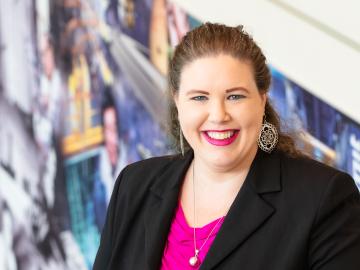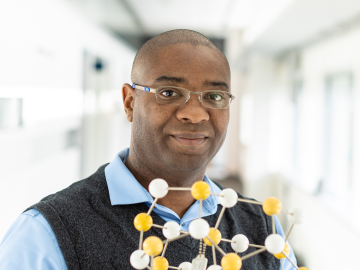
Filter News
Area of Research
- Advanced Manufacturing (10)
- Biological Systems (1)
- Biology and Environment (35)
- Building Technologies (2)
- Clean Energy (112)
- Computational Biology (1)
- Computational Engineering (2)
- Computer Science (2)
- Energy Sciences (1)
- Fuel Cycle Science and Technology (1)
- Fusion and Fission (11)
- Fusion Energy (9)
- Isotope Development and Production (1)
- Isotopes (4)
- Materials (76)
- Materials Characterization (2)
- Materials for Computing (14)
- Materials Under Extremes (1)
- Mathematics (1)
- National Security (6)
- Neutron Science (24)
- Nuclear Science and Technology (21)
- Nuclear Systems Modeling, Simulation and Validation (2)
- Supercomputing (27)
- Transportation Systems (2)
News Type
News Topics
- (-) Advanced Reactors (23)
- (-) Bioenergy (39)
- (-) Biomedical (28)
- (-) Composites (19)
- (-) Materials (92)
- (-) Mathematics (2)
- (-) Nuclear Energy (45)
- (-) Statistics (2)
- (-) Sustainable Energy (75)
- (-) Transportation (60)
- 3-D Printing/Advanced Manufacturing (74)
- Artificial Intelligence (44)
- Big Data (24)
- Biology (39)
- Biotechnology (10)
- Buildings (32)
- Chemical Sciences (39)
- Clean Water (15)
- Climate Change (45)
- Computer Science (98)
- Coronavirus (28)
- Critical Materials (23)
- Cybersecurity (20)
- Decarbonization (28)
- Education (3)
- Element Discovery (1)
- Energy Storage (73)
- Environment (79)
- Exascale Computing (10)
- Fossil Energy (2)
- Frontier (16)
- Fusion (23)
- Grid (36)
- High-Performance Computing (39)
- Hydropower (6)
- Irradiation (2)
- Isotopes (23)
- ITER (5)
- Machine Learning (24)
- Materials Science (84)
- Mercury (5)
- Microelectronics (1)
- Microscopy (27)
- Molten Salt (7)
- Nanotechnology (38)
- National Security (21)
- Net Zero (5)
- Neutron Science (76)
- Partnerships (30)
- Physics (28)
- Polymers (21)
- Quantum Computing (13)
- Quantum Science (36)
- Renewable Energy (1)
- Security (12)
- Simulation (15)
- Space Exploration (13)
- Summit (27)
- Transformational Challenge Reactor (4)
Media Contacts

ORNL scientists found that a small tweak created big performance improvements in a type of solid-state battery, a technology considered vital to broader electric vehicle adoption.

Rigoberto Advincula, a renowned scientist at ORNL and professor of Chemical and Biomolecular Engineering at the University of Tennessee, has won the Netzsch North American Thermal Analysis Society Fellows Award for 2023.

ORNL’s Debangshu Mukherjee has been named an npj Computational Materials “Reviewer of the Year.”

Led by Kelly Chipps of ORNL, scientists working in the lab have produced a signature nuclear reaction that occurs on the surface of a neutron star gobbling mass from a companion star. Their achievement improves understanding of stellar processes generating diverse nuclear isotopes.

Nonfood, plant-based biofuels have potential as a green alternative to fossil fuels, but the enzymes required for production are too inefficient and costly to produce. However, new research is shining a light on enzymes from fungi that could make biofuels economically viable.
Oak Ridge National Laboratory scientists led the development of a supply chain model revealing the optimal places to site farms, biorefineries, pipelines and other infrastructure for sustainable aviation fuel production.

Anne Campbell, an R&D associate at ORNL, has been selected for an Emerging Professional award from ASTM International. ASTM, formerly the American Society for Testing and Materials, is an international standards organization that develops and publishes voluntary consensus technical standards for a wide range of materials, products, systems and services.

A method using augmented reality to create accurate visual representations of ionizing radiation, developed at ORNL, has been licensed by Teletrix, a firm that creates advanced simulation tools to train the nation’s radiation control workforce.

Valentino “Tino” Cooper, a scientist at ORNL, has been appointed to DOE’s Basic Energy Sciences Advisory Committee for a three-year term. Cooper’s research elucidates the fundamental understanding of advanced materials for next-generation energy and information technologies.

SAE International has awarded ORNL Buildings and Transportation Science Division Director Robert Wagner with the SAE Medal of Honor for his dedication and support of the organization’s mission of advancing mobility solutions.


